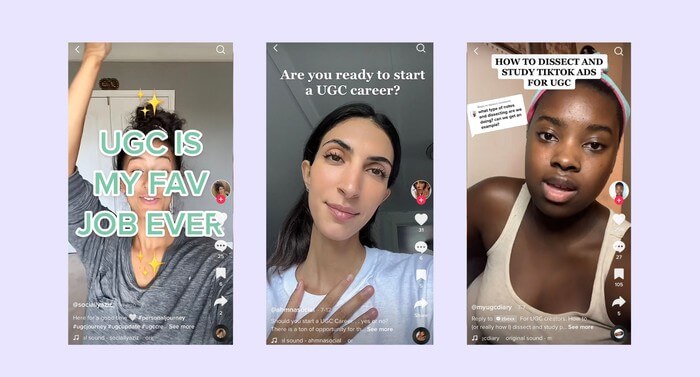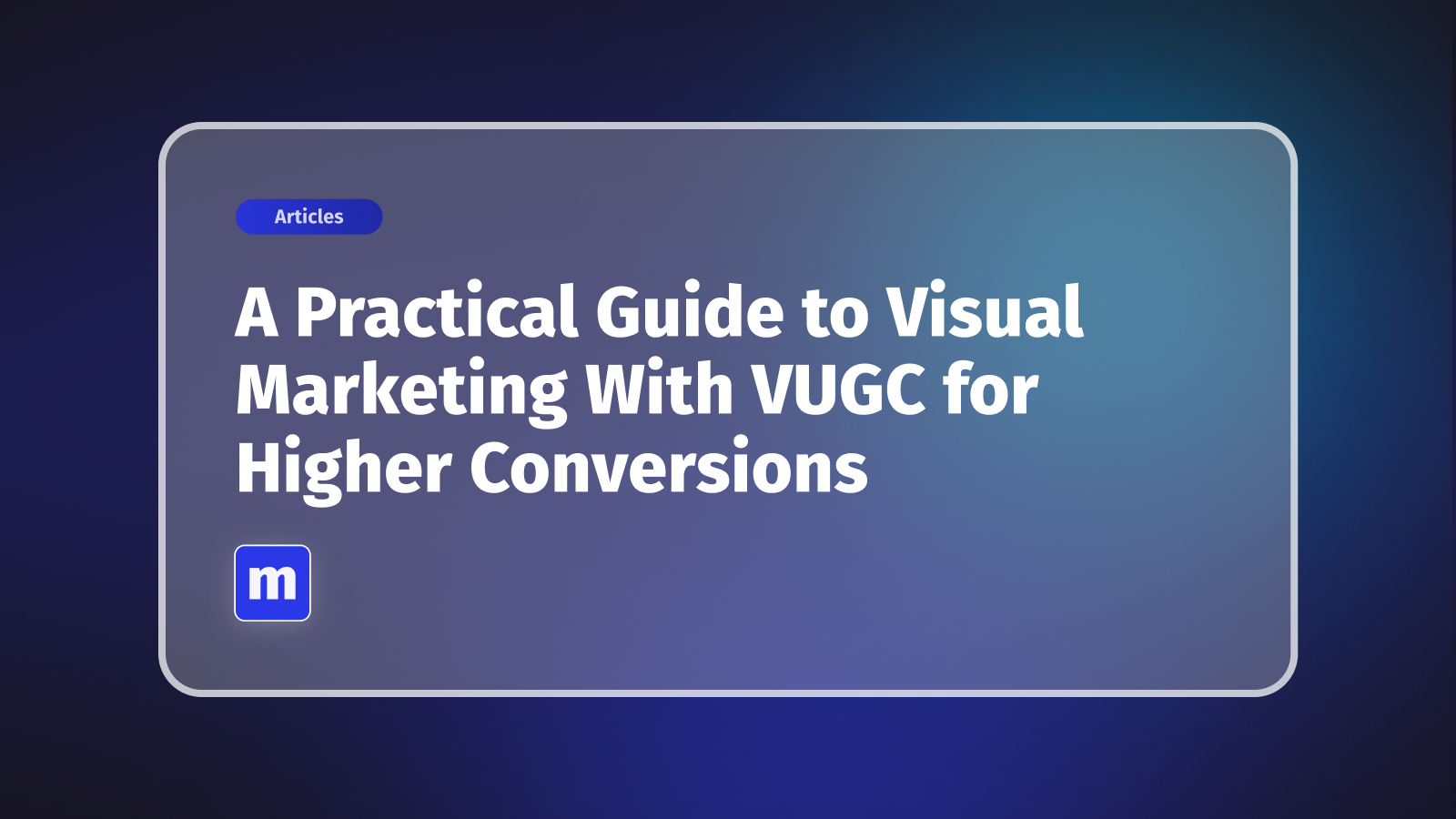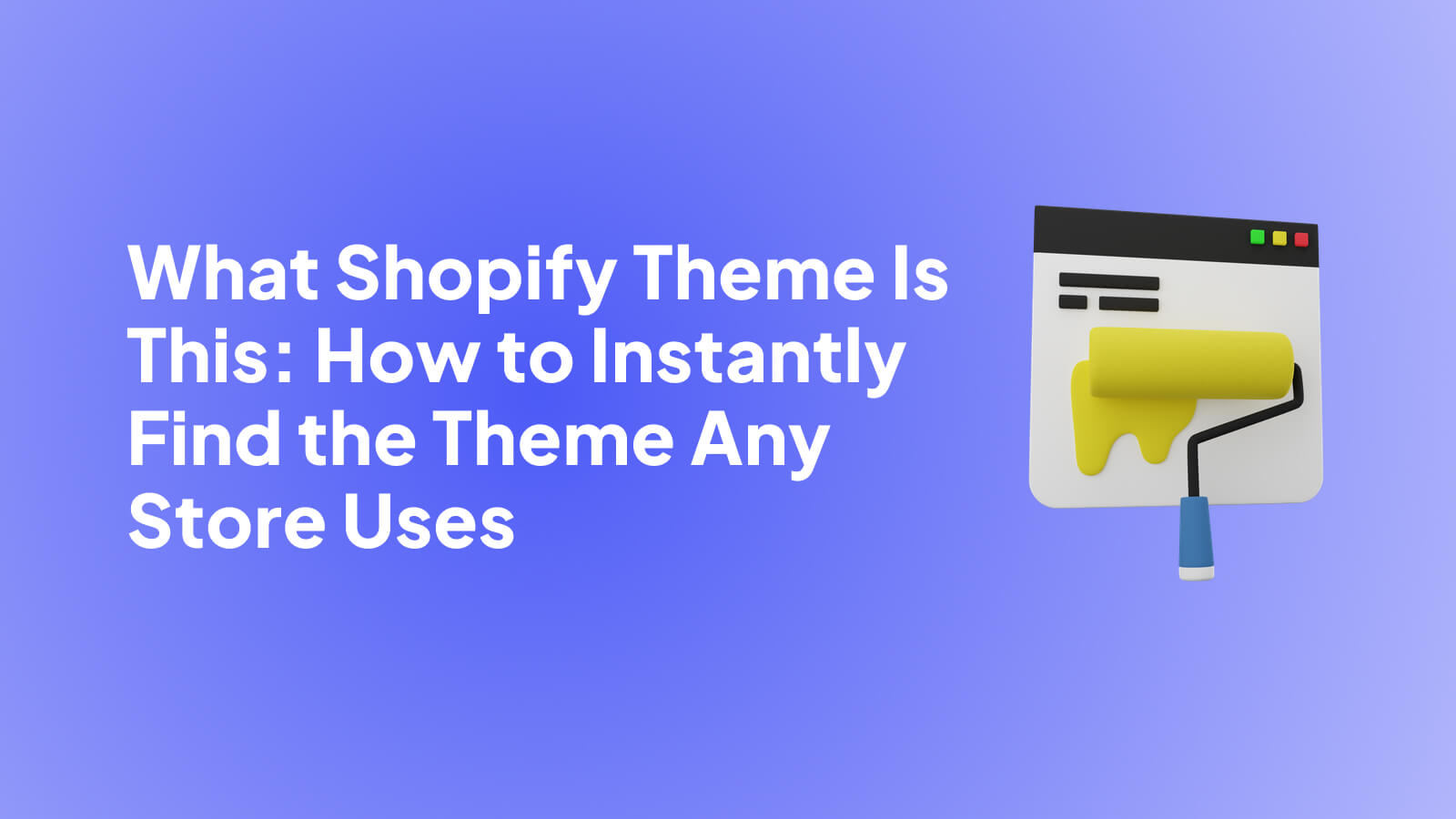.png)
Introduction
As the e-commerce industry has continued its meteoric rise in terms of growth, revenue, and profitability, the ability for brands to stand out through unique, influential marketing strategies remains crucial. One emerging and increasingly useful means of advertising is the utilization of User Generated Content (UGC). UGC encompasses the many ways customers share their experiences with a brand, whether through reviews, social media posts, blogs, or videos. This content, crafted by the users themselves, offers an authentic glimpse into the real-life impact of products and services, setting a foundation of trust and relatability that polished advertising campaigns can rarely achieve. The beauty and effectiveness of UGC lies in its authenticity - one of the most powerful forms of marketing is an honest review from someone who truly loves your product.
Understanding the many benefits of user-generated content can fundamentally transform how companies approach marketing and customer engagement. From enhancing brand trust to boosting SEO, increasing engagement, and driving sales, the advantages of integrating UGC are manifold. This blog post aims to dive deep into the world of user-generated content, exploring its definition, benefits, challenges, and the future trends that will shape its role in marketing. By unraveling the strategic importance of UGC, we invite businesses to unlock a powerful tool in creating more meaningful, trust-based relationships with their consumers.

What is User-Generated Content?
User-generated content is any form of content that has been created and put out into the world by unpaid contributors or fans. It is the real, authentic voice of the customer, showcasing their experiences, opinions, and creativity, all revolving around a brand's products or services. UGC can take multiple forms, each serving different purposes and offering unique insights into consumer sentiment and engagement. These forms include:
- Reviews and Testimonials: These are perhaps the most straightforward examples of UGC, where customers share their direct experiences with a product or service. Reviews and testimonials are the heart of credibility, often swaying potential customers' purchasing decisions by providing real-life feedback.
- Social Media Posts: From Instagram photos tagged with a brand's product to tweets about a customer service experience, social media posts make up a significant portion of UGC. These posts serve as public endorsements, influencing both the poster's network and the brand's audience.
- Blogs and Articles: Sometimes, customers or fans are so moved by their experience with a brand that they dedicate entire blog posts or articles to it. These pieces of UGC can provide in-depth feedback, stories, and uses of a product or service, offering valuable insights to both the company and potential customers.
- Videos: With the rise of platforms like YouTube, TikTok, and Instagram, video content has become a powerful form of UGC. From unboxing videos to tutorial and review content, videos allow for a dynamic and engaging way to showcase how real people use and perceive a brand's offerings.
The prevalence and impact of UGC cannot be understated. According to a report by TurnTo Networks, 90% of consumers say user-generated content holds more influence over their buying decisions than promotional emails and even search engine results. This statistic underscores the vital role that UGC plays in the modern marketing ecosystem, offering an authentic, trust-building bridge between brands and consumers.
The Multifaceted Benefits of User-Generated Content
The digital era has democratized content creation, enabling consumers to voice their opinions, share their experiences, and contribute to a brand's narrative. This shift has created an invaluable asset for marketers: user-generated content (UGC). UGC doesn't just supplement a marketing strategy; it can transform it, offering a variety of benefits that traditional advertising methods struggle to match. At Moast, we specialize in leveraging the benefits of UGC so that companies can greatly benefit from increased brand awareness.
Enhancing Brand Trust and Authenticity
In an online world brimming with polished advertisements and curated marketing campaigns, authenticity has become a rare commodity highly prized by consumers. A Nielsen report highlights that 92% of consumers trust organic, user-generated content more than they trust traditional advertising. This trust stems from the genuine nature of UGC, where real customers share unfiltered experiences, warts and all. By showcasing real stories and testimonials, brands can break through the skepticism often associated with corporate messaging, building a foundation of trust that fosters long-term loyalty.
Boosting SEO and Web Traffic
Search engines prioritize fresh, relevant content, and there's no source more prolific or authentic than that generated by users. Each review, blog post, or social media mention acts as a new indexable page for search engines to crawl, enhancing the brand's SEO footprint. Furthermore, UGC naturally incorporates a wide range of long-tail keywords, reflecting the genuine language and queries of consumers. This not only improves search engine rankings but also drives targeted traffic to a brand’s website. Additionally, UGC can increase the dwell time on a site as visitors engage with real stories and reviews, a metric that further signals to search engines the value and relevance of the content provided.
Increasing Engagement and Community Building
UGC has the power to turn passive consumers into active community members, fostering a sense of belonging and loyalty. When customers see their content featured on a brand’s platforms, they feel acknowledged and valued, which in turn encourages further engagement and content creation. This virtuous cycle not only strengthens the relationship between the brand and its customers but also cultivates a vibrant community around shared experiences and interests. Such communities are instrumental in amplifying a brand’s message, driving word-of-mouth marketing, and providing invaluable feedback.

Enhancing Conversion Rates and Sales
Perhaps one of the most compelling advantages of UGC is its direct impact on sales. According to a study by Bazaarvoice, featuring user-generated content on product pages can increase conversions by up to 64%. Consumers seeking assurance before making a purchase find confidence in the experiences of others. UGC serves as social proof, validating the claims made by brands about their products or services. Whether it’s through user reviews, Q&A sections, or customer photos and videos, integrating UGC into the customer journey can significantly influence purchasing decisions, making it a potent tool for boosting sales.
Gathering Consumer Insights and Feedback
Beyond its marketing benefits, UGC is a goldmine of consumer insights. Every piece of content shared by users provides brands with data on customer preferences, pain points, and experiences. Analyzing this feedback can unveil patterns and trends that inform product development, customer service improvements, and marketing strategies. It offers an unfiltered look into the consumer’s perspective, enabling brands to make data-driven decisions that align with their audience’s needs and expectations.
Overcoming Challenges
While the benefits of UGC are substantial, navigating its challenges requires strategy and diligence. Negative feedback or content can impact a brand's image if not managed correctly. However, such challenges also present opportunities for improvement and engagement. Addressing concerns transparently can enhance trust, and actively moderating UGC platforms ensures a positive and respectful community environment.
Leveraging Technology
To maximize the benefits of UGC, many companies turn to specialized platforms and tools that curate, manage, and analyze user-generated content. These technologies streamline the integration of UGC across marketing channels, ensuring that the content aligns with brand values and marketing objectives. For example, here at Moast, we provide companies with a simple yet highly effective way to integrate UGC of their products directly into their website.
.jpeg)
Strategies for Integrating User-Generated Content
In the age where content is king, user-generated content (UGC) serves as the crown jewels, offering authenticity and engagement that brand-produced content often cannot match. However, integrating UGC into your marketing strategy requires thoughtful planning and execution. Here are key strategies to effectively harness the power of UGC:
Curating and Selecting the Right UGC
Not all user-generated content is created equal. Brands must be selective, choosing content that aligns with their values, messaging, and marketing goals. This process involves:
- Establishing clear criteria for what types of UGC are desirable and why.
- Using hashtags or specific campaigns to collect relevant UGC.
- Implementing quality control measures to ensure the content meets brand standards and is appropriate for a wider audience.
Legal Considerations and Best Practices
Before using UGC in marketing materials, it's crucial to understand the legal implications. This includes:
- Obtaining explicit permission from content creators before featuring their content in campaigns or on product pages.
- Providing clear guidelines on how UGC will be used, to avoid any miscommunication or potential legal issues.
- Crediting the original creator whenever their content is used, fostering goodwill within the community.
Leveraging Tools for UGC Integration
Several platforms and tools can help manage the integration of user-generated content, making it easier to collect, curate, and display UGC across various marketing channels. These tools often offer features like:
- Automated collection and aggregation of UGC from social media and other sources.
- Moderation tools to filter out inappropriate or irrelevant content.
- Analytics to measure the impact of UGC on engagement, conversions, and other key metrics.

Making UGC a Part of Your Marketing Ecosystem
Integrating UGC shouldn't be an afterthought; it should be a core component of your marketing strategy. This involves:
- Encouraging UGC through campaigns, contests (read: How to craft successful UGC contests), and social media engagement.
- Showcasing UGC prominently on your website, in email marketing, and on social platforms.
- Using UGC to inform product development and improve customer experience based on direct feedback.
Creating a Feedback Loop
Engaging with users who submit content and providing them with recognition or rewards can encourage ongoing participation. Additionally, using customer feedback to make tangible improvements demonstrates that you value their input, further strengthening the relationship between your brand and its community.
Challenges and How to Overcome Them
While user-generated content (UGC) offers numerous benefits for brands, it also presents unique challenges that require careful navigation. Understanding these hurdles and implementing strategies to overcome them is essential for maintaining brand integrity and maximizing the value of UGC.
Negative Content and Brand Image
One of the primary concerns with UGC is the potential for negative or harmful content that could affect a brand's image. This issue underscores the importance of:
- Active Monitoring and Moderation: Implementing robust moderation processes to quickly identify and address inappropriate or damaging content.
- Constructive Engagement: Responding to negative feedback in a constructive manner can turn dissatisfied customers into loyal advocates. Publicly addressing concerns and offering solutions demonstrates commitment to customer satisfaction.
Encouraging Positive UGC
Another challenge is generating a steady stream of positive and brand-relevant UGC. Strategies to encourage more constructive contributions include:
- Incentivization: Offering rewards or recognition for high-quality UGC can motivate more customers to share their positive experiences.
- Clear Guidelines: Providing clear, accessible guidelines for the types of content sought can help steer user contributions in a positive direction.
Managing User Expectations
As UGC becomes a prominent part of a brand’s presence, managing user expectations around how their content is used and engaged with becomes crucial. Transparent communication about the selection process and usage rights can mitigate misunderstandings and foster a more collaborative community atmosphere.
Related content
Turn your social content into a revenue channel
Turn your TikToks and Reels into shoppable videos and boost conversions by 3.5x.












